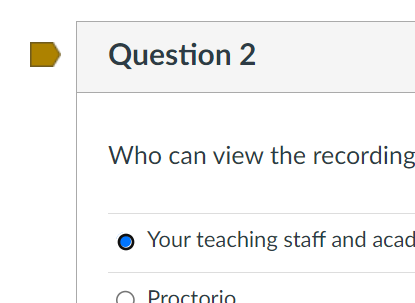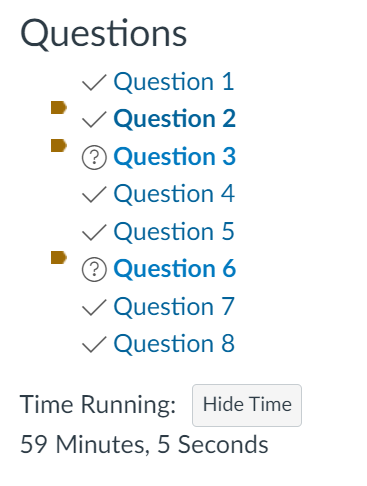🧭 Exam Study Guide
My Email: rob.mgmte2000@gmail.com (Ask me your content questions!)
Direct link to this page: 2000.robmunger.com
Condensed slides and Formula Sheet: robmunger.com/2000share
How to navigate this website: 🧭 Getting Oriented
Using this Study Guide
This page includes exam information, study tips, and tips on how to use this website, condensed versions of Bruce’s slides (to save paper if you print) and links to the sections when we covered Problem Set solutions.
You can also access the pages through the sidebar←. Notes from each section meeting and other resources can be found using the Getting Oriented page.
During the review session, I give a guided tour of this site, but you can also just look through and use what you find most helpful.
Remember: This study guide is a work in progress and is just a companion to the live review session. You are responsible for everything covered during Bruce’s class meetings.
Exam Logistics
Our Head TA, Blair, will answer your administrative, technical and policy questions related to the exam. Blair will be sending out an announcement with all of the exam details you need. Bruce can also answer policy and administrative questions related to the exam. Their email addresses are blair.mgmte2000@gmail.com and bwatson@fas.harvard.edu, respectively.Important information can also be found in your syllabus. Here is the information for Spring 2025 Final Exam:
The final will be available on Canvas starting at 8:10 PM (EST) on Tuesday, May 13. Students will have a 24-hour window, from 8:10 PM (EST) on Tuesday, May 13 to 8:10 PM (EST) on Wednesday, May 14, in which to complete the exam. The exam is two hours long, and, once begun, must be taken in one sitting. It cannot be partially finished, then saved, then completed later.
The final will be cumulative, and cover all the material presented in lectures, from the first lecture on Jan. 30 to the last lecture on May 6. However, it will be heavily weighted toward material presented since the midterm. There will only be a few questions on the material presented before the midterm.
Section logistics:
Further information can be found here:
MGMT E-2000 Test prep time management
Bruce deliberately doesn’t tell you what is on the exam, because he wants you to know all of it. He considers any slide that he covers to be “fair game” on the exam. With that said, he does seem less interested in testing individual facts and figures on the exam. A majority of the questions typically cover calculations, but usually several questions cover concepts, much like on the homework.
The best indication of exam questions are the homework questions, but with some caveats:
- You’ve already done the homework and studied, so it will be far easier when you take the exam.
- His exams are carefully constructed so that you will have plenty of time if you are well prepared. To be well prepared, you should be able to do the problem set problems fairly rapidly.
🙋♀️Master the skills and understand the concepts and you’ll be good to go. With Rob’s help. Use Rob’s website, too!
⅓ Concept Review/Foundation
- Review the slides. Make sure you can explain each slide. Understanding these core ideas is the foundation of the problem solving skills you’ll be using during the exam.
- Because this course is so conceptual and such a foreign way to think (at first), it can be surprisingly helpful to rewatch Prof. Watson’s lectures, particularly after you have done a homework assignments (you can adjust the play speed).
- To help you speed up this portion of your studying, you can use my website.
⅓ Practice
- It can be very helpful to review your old problem sets. Blair kindly reposts all problem sets for practice. Work through them as if you were taking a test, start to finish, trying to get every single possible point. Perhaps take notes on the questions you struggled with and return to those ones later.
⅓ Shore up weaknesses
- Reach out to me with any questions you may have.
- If you are reviewing homework and are confused by a question, email rob.mgmte2000@gmail.com and I will cover it in the next section. (For example: “Please review PS 3, Q5. I didn’t get how R was computed.“)
During the exam
Next to each question is a little marker that you can use to flag the question. When you click it, it turns yellow:

In the upper right-hand corner of the screen is a list that indicates which questions you’ve answered and which you’ve flagged.

Clicking on a question number brings you to that question. Below the list is a hidable “Time Remaining Clock.”
You can test this functionality out in the Proctorio Setup Quiz (that’s actually where these screenshots come from). It can be very helpful with time management!
Solution Recordings, Formula Sheet, Condensed Slides, etc.
If you’ve downloaded Bruce’s slides, you may have noticed that he repeats a great deal of information as he builds slides. I make condensed slides that are often 40% shorter because I remove the redundant material. They can save resources if you print out the slides to review.
An additional page on this site includes information about Solution Recordings, Formula Sheet, Condensed Slides, etc. Here is a direct link to the file share: robmunger.com/2000share.
🙋 “I noticed that one of the areas I lose time answering questions is wanting to be thorough and showing all of the work typing up all of the equations. … I learned from taking a previous class with you, that I needed to be able to speed up for the exams so I adjusted my study method.”
How to use this Study Guide
The page you are reading is one of more than one hundred pages in this study guide. To see how to read the other pages, please watch my review session during the last class meeting.
Alternatively, you can just review the Getting Oriented page on this site.
↖ Please take a moment to explore some of the helpful links in the navigation bar! You can always get back to this site by bookmarking the following link: 2000.robmunger.com
Exam anxiety
During the actual exam, keep your head down, keep moving forward, no matter what, and you’ll be fine.
- When necessary, just draw your attention back to the problem on the screen.
- If you get behind time-wise, consider making your best guess and moving on to the next question.
- Keep an eye on the clock, but try not to focus too much on it.
- Rinse and repeat until the clock runs out. One foot in front the other!
🙋♀️How carefully do we need to write out our answers on the exam?
✔During an exam, it’s natural to be a bit nervous, but the grader has reasonable expectations for how much you need to write out. A simple rule is that you want to make it clear to the grader that you understand the problem and have done the work. Therefore, write down what a reasonable person would write down in explaining the problem. If Bruce asks you to explain something, include things that he might include when answering the question. As long as you know the material well enough to know the answer, if you do these things, you will be fine!
Feedback? Email rob.mgmte2000@gmail.com 📧. Be sure to mention the page you are responding to.